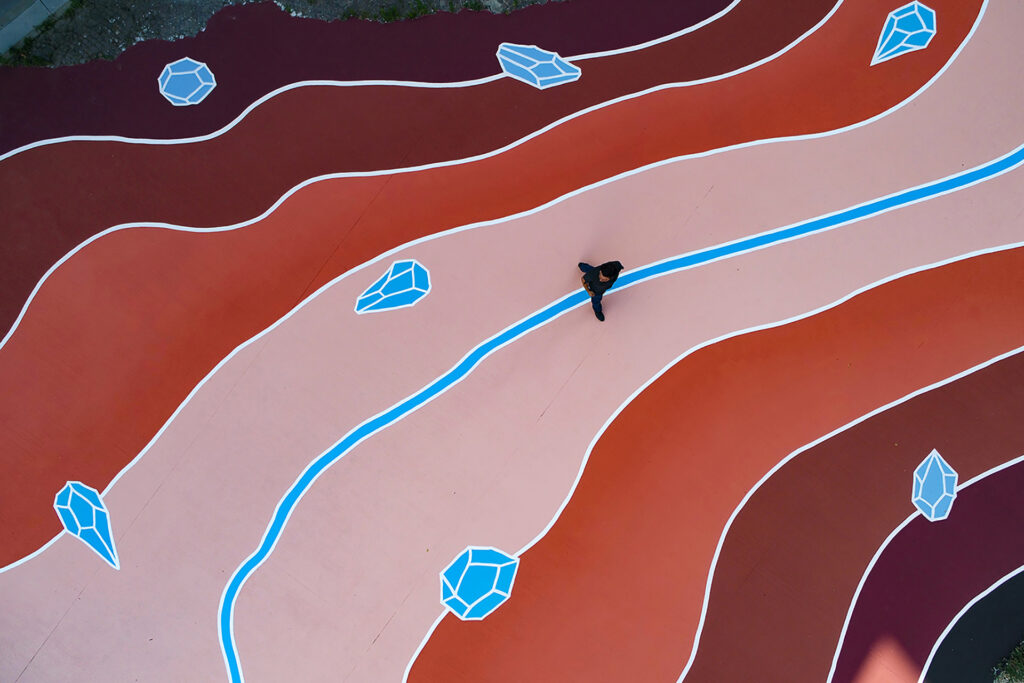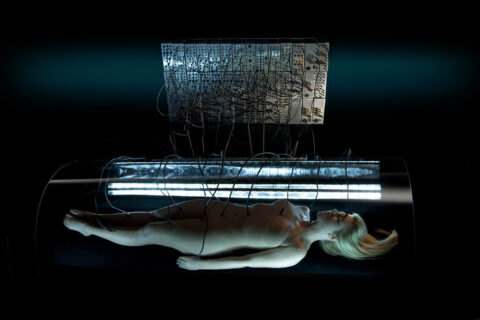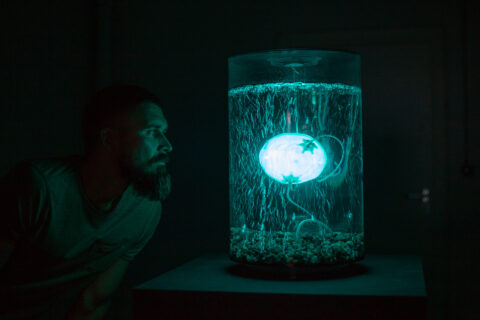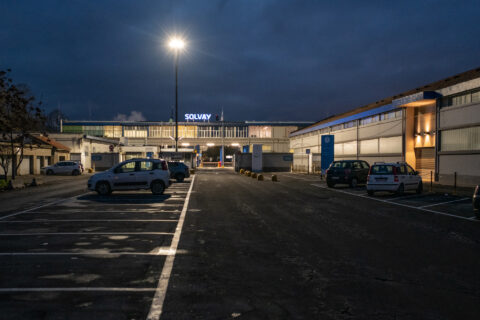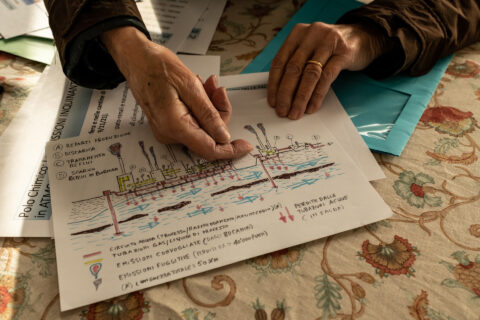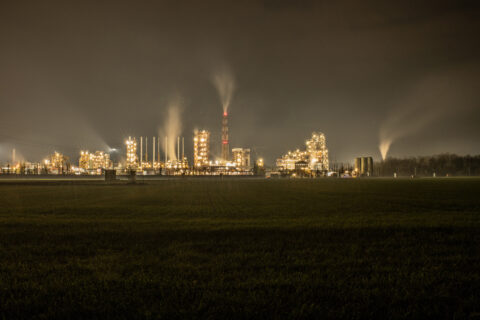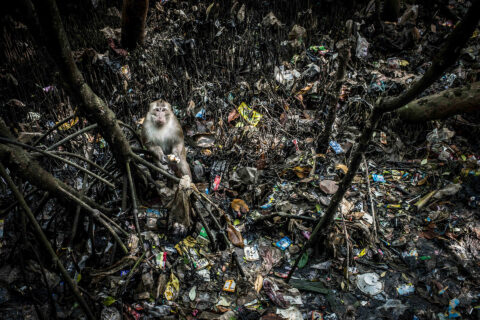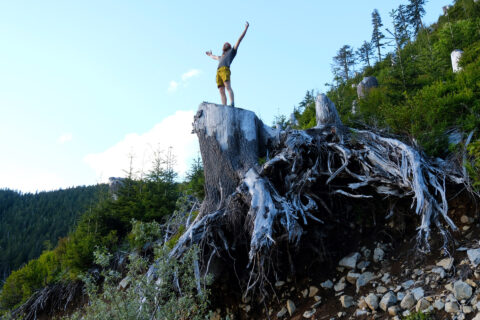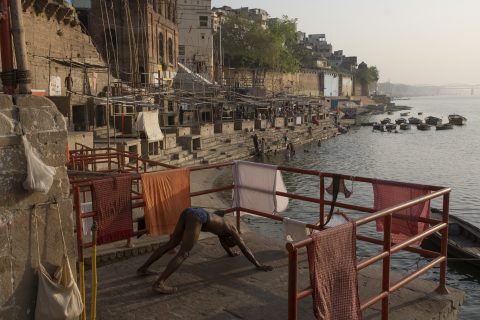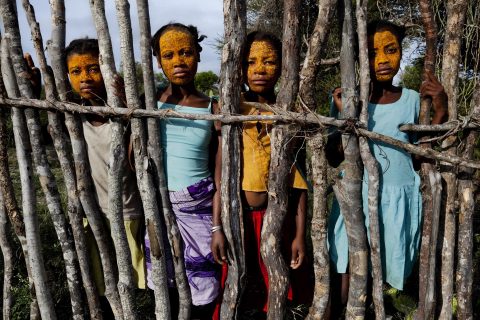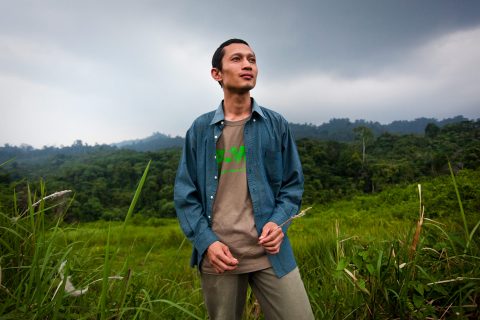The mural is one hundred metres long and six metres high. It is located in a city of art, Venice. It is not an act of vandalism, even though it covers a palace right on the Grand Canal, but it is a work of art; indeed, of art and science. It is a unique feat, considering the very strict rules of protection and conservation of Venetian palaces. Yet Andreco has succeeded in indelibly fixing, while still using natural pigments with a low environmental impact, his environmentalist message by representing, between mathematical formulas and extreme waves that become art, the rise in the average sea level caused by global warming between now and 2200.
Andreco (Andrea Conte) has been engaged for twenty years in interdisciplinary research between science, environmental sustainability, activism, urbanism, anthropology, ecology, philosophy and symbolism. He also works on green technologies and nature-based solutions for urban sustainability in collaboration with the School of Engineering and Architecture of the University of Bologna and Columbia University in New York. His artistic research focuses on the relationship between man and nature and between the built environment and the natural landscape, and he has always placed great emphasis on the purpose of his works, to support good environmental practices and combat greenwashing.
The work that appeared in the heart of Venice is part of the Climate Art Project, one of his climate action projects. The aim of the project, consisting of a series of interventions in different cities around the world, is to raise awareness about global warming and spread nature-based solutions for climate change adaptation and mitigation. «Scientific and artistic research use different methods and languages, but they have in common the desire to make the invisible visible and show possible futures».
This is what the artist-scientist often talks about in the series of presentations he has called Future Climate. «The scientific method is rigorous, made up of verified and reproducible experiments, the artistic method is free, sometimes working through visual associations, not necessarily rational, let alone reproducible», says Andreco. «However, intuition is a common element of both researches. The artist can provide another point of view to the work of the scientist, starting from scientific data he can take a leap into the imaginative, into vision. At least that is what I try to do in my work».
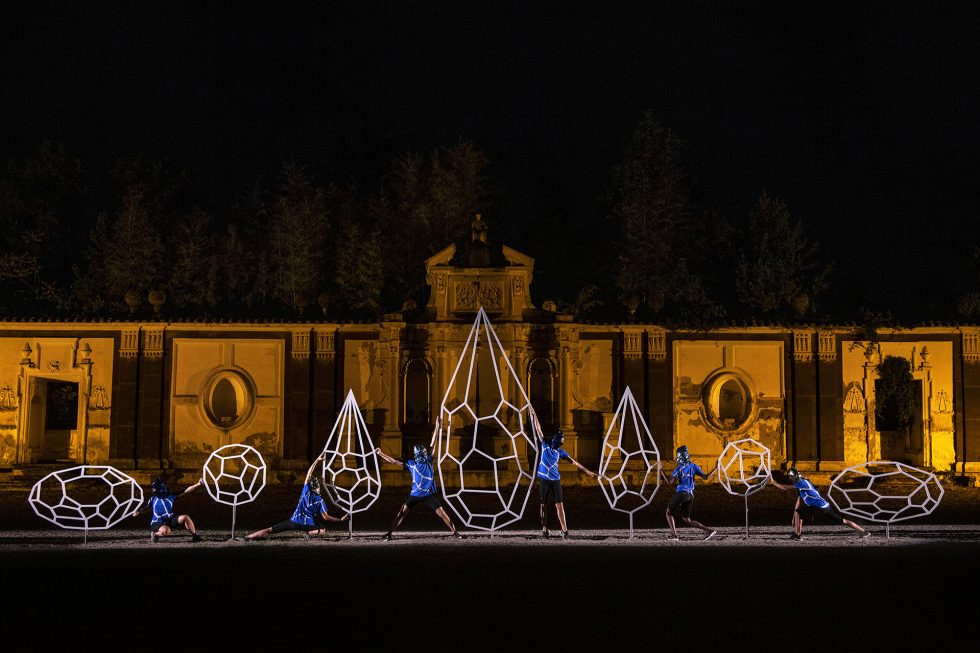
Drops, a group of sculptures on the fall of a drop of water and State of Matter, performance. Works created for the exhibition Back to Nature promoted by Roma Capitale, Assessorato alla Crescita culturale, Sovrintendenza Capitolina ai Beni Culturali, curated by Costantino D’Orazio. Deer Park in Villa Borghese, Rome until 13 December 2020. Photo: Giorgio Cohen Cagli – Studio Andreco.
Andreco uses many techniques to represent his art, from public installations to videos, performances, wall paintings and drawings, and at the moment when an artist becomes an activist based on method and scientific data, he also seems to take on a significant role in communicating about the environment and the climate crisis. Andreco has a clear idea about the role of art in communicating science: «Art will not save us, on its own it has no effectiveness, but together with the other languages, the scientific and the political language of activists, it has a role in the cultural debate and the process of change». And so it will certainly not be art that saves us, but it could be a stimulus to think, and to think differently: «The language of art is less explicit, less direct than scientific or political language; it conveys neither answers nor solutions, between the lines, it asks questions». And then he adds: «I like to say that my works have an open meaning that is completed by those who observe them according to their experience and cultural background».
For the artist-scientist, art is even a revolutionary act: «This involvement of the cognitive process that induces reasoning in the observer could function as a goad that moves people’s sensitivity and consciousness towards change. Art is neither communication nor decoration but rather similar to a revolutionary act as the French philosopher Gilles Deleuze used to say».
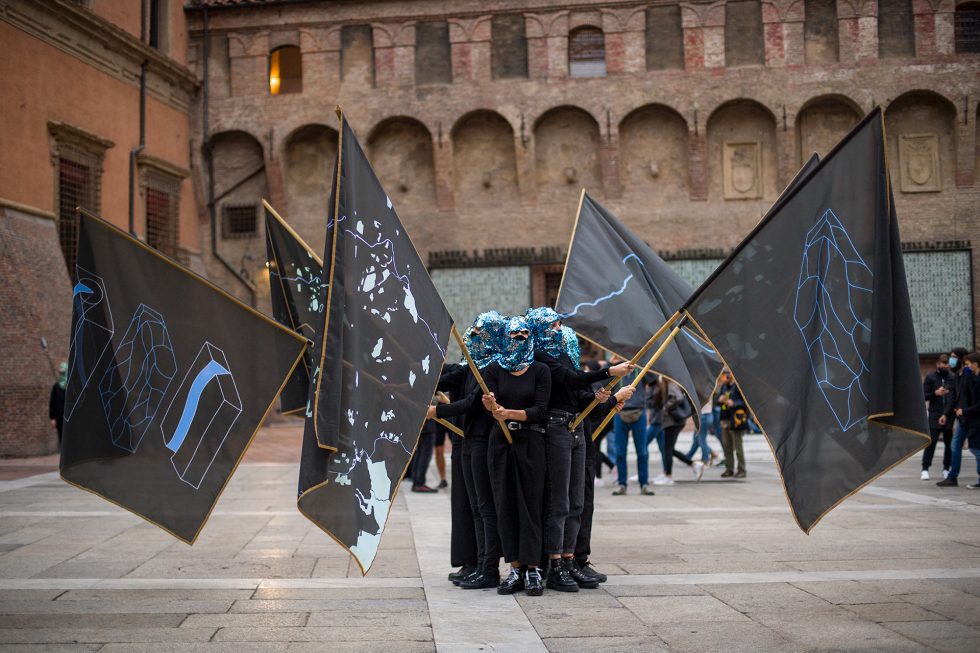
Displacement, performance on climate change and water in solidarity with climate migrants, produced by Weworld for the Terra di Tutti Film Festival. Piazza Maggiore, Bologna. Photo: Michele Lapini and Marco Panzetti – Studio Andreco.
The first lockdown and the current health emergency have forced home families, students, professionals from all sectors and even artists. Andreco has travelled extensively in the past for work, both as an engineer and as an artist, for exhibitions and public works, for assignments in development cooperation or urban environmental sustainability.
The artist goes on to explain: «Before Covid-19 I was already trying to limit my travels, also to have less impact on CO2 emissions, by doing online talks and carefully selecting exhibitions and projects to do abroad. «I am oriented towards developing globally connected local projects. Doing local projects between art, science and the environment also means taking longer to work, building better relationships with partners and having a better impact on the territory. When it is possible I will return to travelling, but I will be very selective about the assignments and still ensure continuity for my local Climate Art Projects».
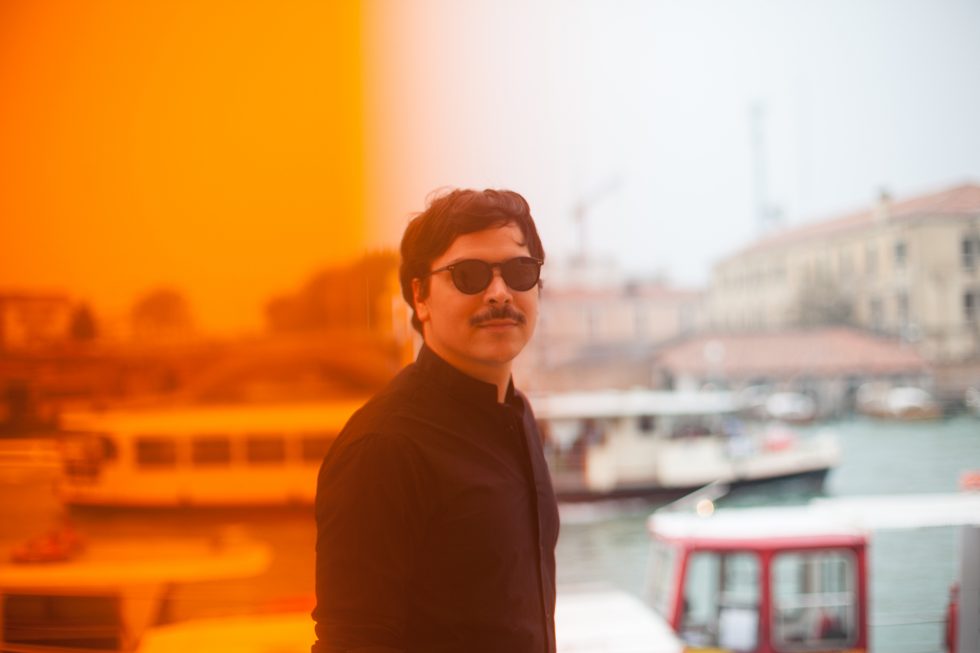
Andreco (Andrea Conte), Venice 2017. Photo by Samantha Casolari.
Andreco has become a reference for many young artists and environmental activists. Asked what would be the fundamental teachings he would impart to those who wish to take the same path as him, he replies: «First of all, it is fundamental to study. Because scientific and environmental issues are complex and you have to know them thoroughly in order not to treat them superficially or fall into easy greenwashing operations. Knowledge of the issues is an indispensable prerequisite. Then you have to follow, once you know the topics in depth, your instincts and look for unexplored ground, experiment freely, without copying or emulating predecessors. This is how one does research and creates innovation. Once one has come up with something innovative, I would suggest that one should not sell it off to the current neo-liberal economic system, which would render all the work done in vain. On the contrary, such a discovery should be used as a lever for the overturning of this extractivist economic and production system: the main enemy of environmental sustainability, the circular economy and the ecosystems in which we live».


